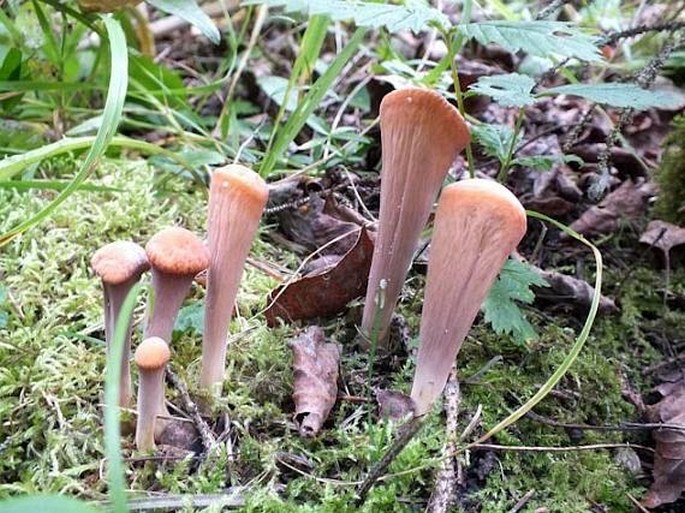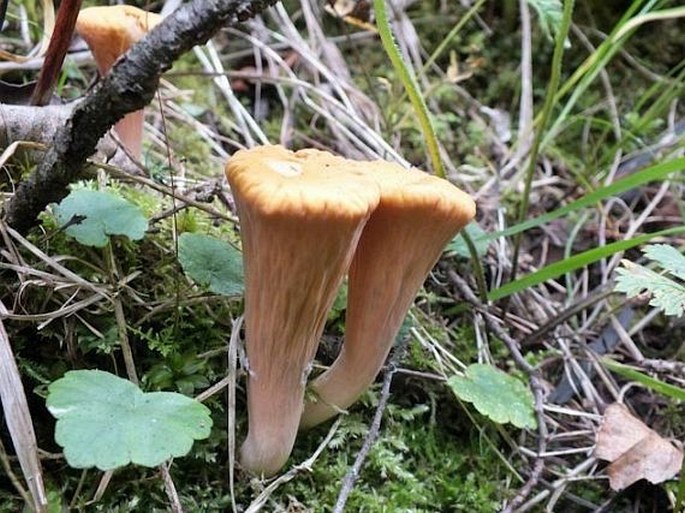Syn.: Clavaria pistillaris var. umbonata Peck, Clavaria truncata Quél., Clavaria truncata Lovejoy, Clavariadelphus borealis V. L. Wells et Kempton, Clavariadelphus lovejoyae V. L. Wells et Kempton, Craterellus pistillaris Fr., Trombetta pistillaris (Fr.) Kuntze
Family: Clavariadelphaceae Corner


Distribution: Europe and North America. The last record in Czechia is from 1960s along Vltava river and in Moravia. It could have been seen even later than that but not verified. Only in 2010 the find was documented.
Ecology: Terrestrial fungus growing mostly in moss in coniferous forests, preferably under fir on limestone. Can be found from August to November.
Description: Fruiting body is simple, erect, unbranched or occasionally forked, club-shaped with broadly flattened or depressed apex,
5–15 cm tall, 2–9 cm wide, surface smooth or wrinkled or veined, pinkish-brown to ochre to brownish-orange. Flesh white to ochre, tough or pithy, taste mild to sweetish. Spores pale ochre, elliptical, smooth.
Threat and protection: In Red list of mushrooms of Czech Republic as Missing (EX).
Use: Edible species and eaten in Canada. Too scarce in Europe to eat. Might be useful in treatment of tumour illnesses.


These images were taken in Canada, Alberta, Water Valley (August 2013).


